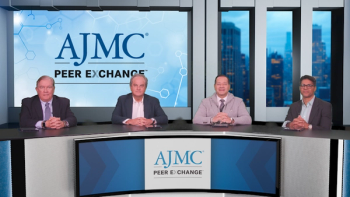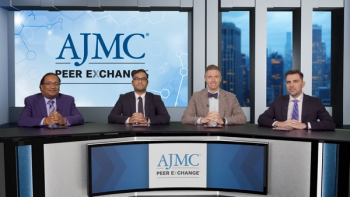
Patient Profiles: Demographics and Disease Biology
Panelists explain that KMT2A-rearranged acute myeloid leukemia (AML) is a biologically aggressive and diagnostically complex leukemia subtype—especially prevalent in pediatric and therapy-related cases—with variable prognostic implications depending on fusion partners, underscoring the need for early molecular identification, personalized treatment strategies, and expanded access to targeted therapies and advanced diagnostics.
Episodes in this series

KMT2A-rearranged AML is a biologically and clinically distinct subtype that poses unique diagnostic and therapeutic challenges. Although relatively rare in adults, accounting for about 2% of cases, it is more common in infants and children, with prevalence rates as high as 10% to 15% and even higher in infant leukemia. Clinically, these patients often present with high white blood cell counts, preserved platelet levels, and a more aggressive disease course. Some may also exhibit extramedullary involvement. Prior exposure to chemotherapy, particularly topoisomerase II inhibitors, is a known risk factor, especially in therapy-related cases. Diagnosis can be complex, as conventional cytogenetic methods may not detect all KMT2A rearrangements, necessitating the use of more advanced techniques like RNA fusion panels.
The prognostic implications of KMT2A rearrangements are influenced by a variety of factors, including the specific fusion partner involved. Although historically classified as adverse risk by major clinical guidelines, such as National Comprehensive Cancer Network and European LeukemiaNet, the stratification can vary depending on the fusion subtype and treatment intensity. For example, certain translocations like t(9;11) may be categorized as intermediate risk. However, this subtype often shows resistance to induction chemotherapy, and even when remission is achieved, relapse tends to occur quickly. Rapid progression and treatment urgency make early detection and appropriate risk stratification critical for timely decisions regarding allogeneic stem cell transplantation.
Current research is exploring how various fusion partners might impact treatment response, particularly with the development of targeted therapies. Identifying KMT2A rearrangements early remains a priority, not only for prognostication but also for guiding individualized treatment strategies. Broader access to comprehensive molecular diagnostics and the integration of personalized therapeutic approaches are essential for improving outcomes in this high-risk group. Continued collaboration and data collection will be vital to refining risk models and optimizing care.
Newsletter
Stay ahead of policy, cost, and value—subscribe to AJMC for expert insights at the intersection of clinical care and health economics.












































